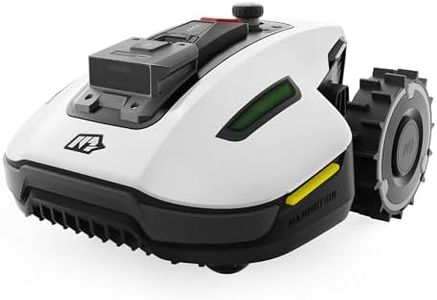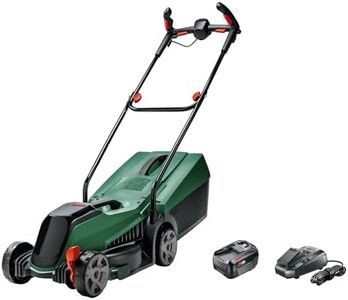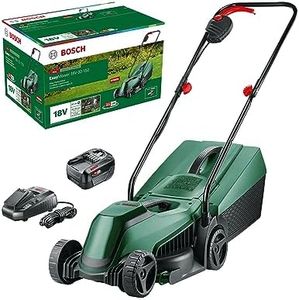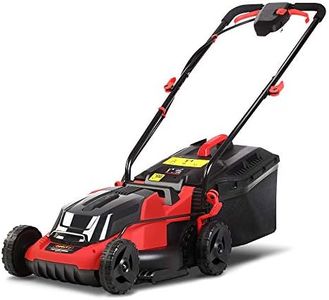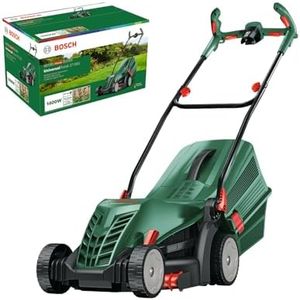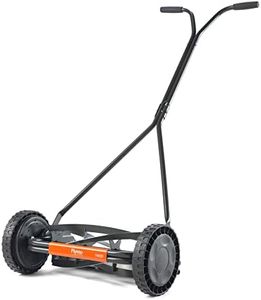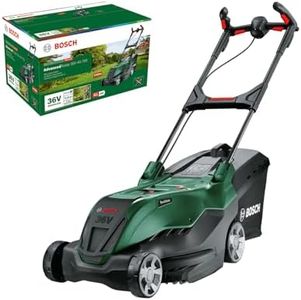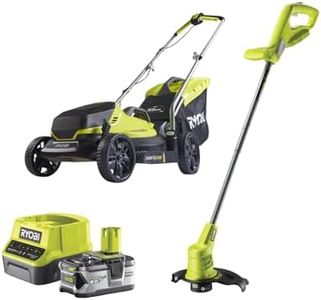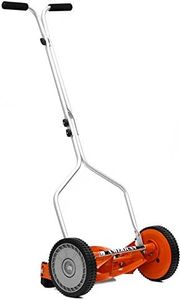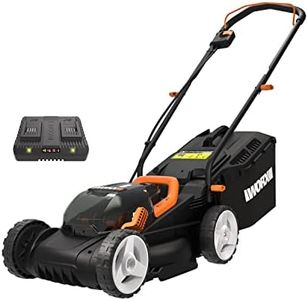We Use CookiesWe use cookies to enhance the security, performance,
functionality and for analytical and promotional activities. By continuing to browse this site you
are agreeing to our privacy policy
10 Best Lawn Mower For Small Yards
From leading brands and best sellers available on the web.Buying Guide for the Best Lawn Mower For Small Yards
When choosing a lawn mower for small yards, you'll want to focus on practicality, maneuverability, and ease of use. The size of your yard means you don’t need the biggest or most powerful model, but you still want something efficient and comfortable for regular use. Think about storage space, noise levels, whether you prefer pushing or like a mower that moves on its own, and how much effort you want to invest in maintenance. By understanding the most important features, you can choose a mower that’ll make your lawn care much simpler and more enjoyable.Type (Push, Self-propelled, Electric, Manual Reel)The 'type' of mower describes how it operates and how much work it requires from you. Push mowers are manual and require you to push them forward, making them simple and lightweight—great for small yards if you don’t mind a little workout. Self-propelled mowers have a drive system that helps move the mower, which means less effort on your part—handy if your yard has slight slopes. Electric mowers (corded or battery-powered) are quiet and easy to start, with less maintenance, while manual reel mowers are human-powered, very quiet, and eco-friendly, but work best on well-kept lawns. To pick the right one, think about your physical ability, your desire for convenience, and the state of your lawn.
Cutting WidthCutting width refers to how wide an area the mower cuts in one pass. Smaller widths (around 14-16 inches) make it easy to maneuver in tight spaces or around garden beds, ideal for tiny or oddly-shaped yards. Mid-sized cutting widths (16-20 inches) strike a balance between fast mowing and ease of movement. Larger widths can finish the job quickly but might be harder to turn in smaller areas. For a small yard, a narrower cutting width is usually more convenient and makes storage easier.
Power Source (Gas, Battery, Corded Electric, Manual)The power source determines how the mower runs and impacts maintenance, noise, and performance. Gas mowers are powerful but noisier and require more upkeep. Battery-powered electric mowers are quieter, cleaner, and offer cordless convenience; good battery life is key for uninterrupted mowing. Corded electric mowers never run out of power during use, but the cord can limit your movement and reach. Manual reel mowers have no engine, so they need the most physical effort but are eco-friendly. For most small yards, battery-powered or corded electric mowers are popular for their quiet operation and low maintenance.
Grass Clipping Management (Mulching, Bagging, Side Discharge)This spec describes how the mower deals with the grass it cuts. Mulching mowers chop grass finely and leave it on your lawn to decompose, which helps fertilize. Bagging mowers collect clippings for disposal, leading to a cleaner yard but requiring you to empty the bag as you mow. Side discharge throws clippings out a chute onto the lawn. For small yards, mulching is usually simplest and most beneficial, but if you want a tidy finish every time, choose a bagging option.
Height AdjustmentHeight adjustment allows you to set how tall or short the mower cuts the grass. Simpler mowers might have two or three manual wheel settings, while others have easy-to-use levers for fast changes. For most people, having several options to adjust the height is useful for different times of the season or depending on the type of grass you have. Look for easy-to-change settings that don’t require tools for the most user-friendly experience.
Weight and StorageThe weight and storage options affect how easy the mower is to use and put away. Lightweight mowers are easier to push and store, especially if you have to carry them or have limited space. Some mowers also feature foldable handles or compact designs to fit into small sheds or closets. Consider your storage space and how far you’ll need to move the mower to decide what weight and storage features are right for you.
